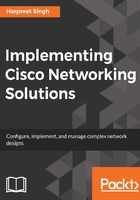
Cloud computing
The growing cost pressures on businesses in a highly competitive world forced IT teams within organizations to use every resource to its optimal capacity. This led to a lot of innovations especially in computing space. The average utilization of a compute machine was in the range of 20-30%, which was a big improvement area. Server virtualization as a technology solved this challenge, by abstracting the underlying server hardware, and making multiple computing machines run on them virtually. These machines come to be known as Virtual Machines (VMs) as the user was using them as he would use a physical machine, but these were not tied to any underlying physical infrastructure.
Cloud computing is the term used to describe the environments that provide shared computing resources on demand. These clouds can be private if they are hosted within the data center within the organization's premises, or public where the infrastructure is not built, but taken as a service from a service provider such as AWS.
Cloud computing can move the application workloads from one physical machine to another at the click of a button using automation software that can move these workloads or VMs from one physical server to another. In a private cloud, these workloads remain within the organization's DC, while in a public cloud, these machines remain within the provider's data centers. In a hybrid cloud environment, the workloads can move between the on-premise DC, and the service provider's DC.
This flexibility from a computing perspective brings its own set of challenges of moving VMs across data centers, both on-premise and to the cloud data centers. At the same time, there are challenges on the networking side to provide secure connectivity between the private and public clouds, which needs to be addressed.
We will cover the networking implications of cloud computing in Chapter 7, Understanding and Configuring Data Center Technologies.